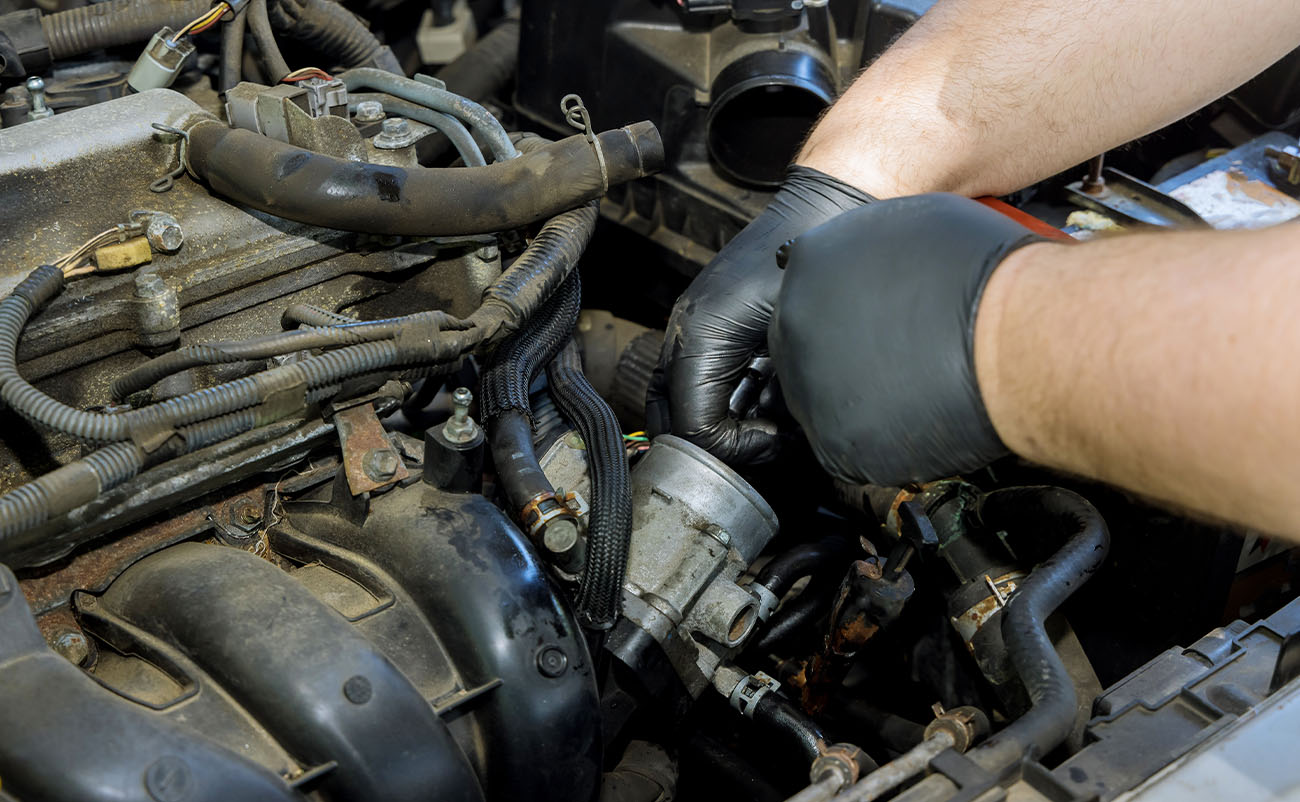When you press your car’s gas pedal, you expect to get an immediate response from the engine. Some cars, especially older vehicles, have a mechanical linkage between the gas pedal and the throttle body. However, many newer vehicles rely on a throttle position sensor (TPS) and an electric actuator to control the throttle plate. When the throttle position sensor gets dirty, the engine will not perform as it should. There are a few different symptoms you might experience when this happens, and we will describe those in this article. We’ll also tell you how to clean the throttle position sensor so that your engine performance is restored and your car runs smoothly again.
Table of Contents
What Is A Throttle Position Sensor (TPS)?
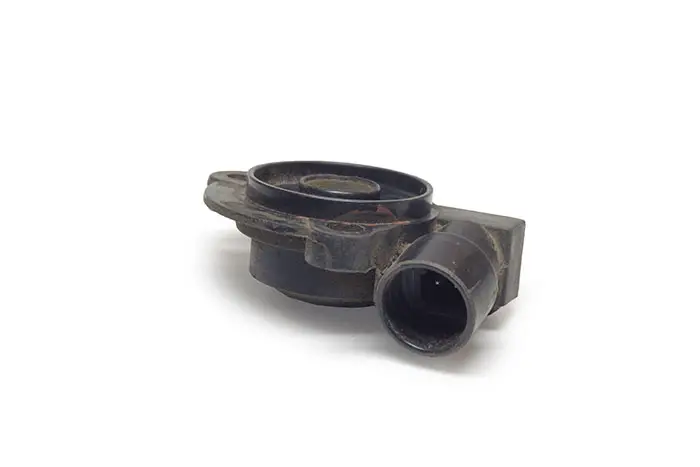
The throttle position sensor is an electrical sensor located in your car’s throttle body that tells the vehicle’s computer (ECU) how much the gas pedal is being pressed. This sensor provides a range of values depending on the specific position of the accelerator pedal. The further the gas pedal is pressed, the higher the output from the sensor should be. As the pedal is pressed, the TPS should provide a smooth and linear increase in the output. When the TPS is dirty, the output will jump between numbers and skip from one number to the next.
The output from the TPS controls the throttle plate inside the throttle body. As the output from the TPS increases, a small actuator will open the throttle plate wider. The actuator will open and close the plate based on the output from the TPS. Remember that these devices replace the mechanical linkage found in older cars that directly controls the throttle plate via a physical throttle cable from the gas pedal. Newer cars with a throttle position sensor tend to run more efficiently and get better fuel economy because the car’s computer system can be precise with the fuel required for the engine.
Symptoms Of A Bad Throttle Position Sensor

A bad or dirty throttle position sensor can cause a few problems with your vehicle, most of which will be noticeable when driving. If you notice any of these symptoms, it may be time to clean or replace your TPS. Here are the three most common signs of a bad throttle position sensor.
— Rough Idling
If your car’s engine develops a rough idle, you might have a dirty TPS sensor. At idle, the throttle position sensor should have a consistent output, and the idle air control valve (IAC) inside the throttle body should keep the engine running at a constant RPM. However, a dirty TPS can provide an erratic output that will cause the engine’s RPM to bounce around at idle. A dirty air filter or dirty fuel injectors can also cause this symptom. If your car has a rough idle, you should go ahead and replace the air filter, as well as clean the fuel system and TPS. This should get your car running smoothly again. You might also consider using a bottle of catalytic converter cleaner as part of your tune-up. If your converters are clogged, you will find the cost of replacing a catalytic converter very high.
— Engine Stalling
When you press the gas pedal, you expect your car to accelerate. However, a dirty TPS can cause the engine to stall instead. Without the proper throttle response, the car’s computer may deliver either too much or too little fuel to the combustion chamber. Either of these conditions can result in your engine sputtering or stalling. A thorough cleaning of the throttle body and throttle position sensor will correct this problem most of the time.
— Erratic Throttle Response
One of the most surefire signs of a faulty or dirty throttle position sensor is erratic throttle response. As we previously mentioned, your throttle position sensor should provide a clean, linear output as you press the accelerator. However, an erratic output from the sensor will cause your engine to respond erratically. If you notice that your car doesn’t accelerate immediately upon pressing the gas pedal or that it accelerates quickly when you barely press the pedal, the throttle position sensor is likely to blame.
TPS & Throttle Body Cleaning Process
Now that you know the signs of a dirty TPS and throttle body, you are probably wondering how to clean a throttle body or perform a throttle position sensor cleaning. Cleaning a throttle position sensor is pretty straightforward, and this is something that most people can tackle on their own. You’ll need a few tools and supplies before starting the cleaning process. Go ahead and get a can of throttle body cleaner, a flat and Phillips screwdriver, a toothbrush, gloves, safety glasses, wrenches, and some paper towels.
Before you start cleaning, you should disconnect the negative battery terminal. This will help protect the electrical sensors and protect you from getting shocked. Remove the air duct from the throttle body (on top of the intake manifold) by removing the hose clamps or connectors. This will expose the inside of the throttle body. Be careful not to damage the mass airflow sensor (MAF) during the duct removal.
Once you can see inside, spray the throttle body cleaner inside and use a small brush to remove stuck debris. Use a paper towel to wipe off the excess cleaner and debris. Repeat this process until the throttle body is clean. The throttle position sensor is located inside the throttle body, and there is usually no need to remove it and clean the sensor separately.
Once the throttle body is clean, replace the air duct and reconnect the battery. Start your engine and let it idle for a few minutes. The sensors will likely need a few minutes for calibration after the cleaning, so your engine might have a rough idle immediately upon the first startup.
For sensors that are extremely dirty, you can remove them from the throttle body and clean them. However, this sensor is very delicate and can be damaged easily. If the sensor is that dirty, you should likely either replace the sensor or leave the cleaning up to a professional mechanic. You can also test the sensor using a multimeter to ensure the output response is linear, but that is usually best left to a mechanic as well.
Best Throttle Body Cleaners
If you are considering performing this car repair on your own, you are likely wondering which TPS sensor cleaners are the best. We’ve compiled a list of the four best cleaners, so here are the ones you should consider.
— CRC Throttle Body And Air-Intake Cleaner
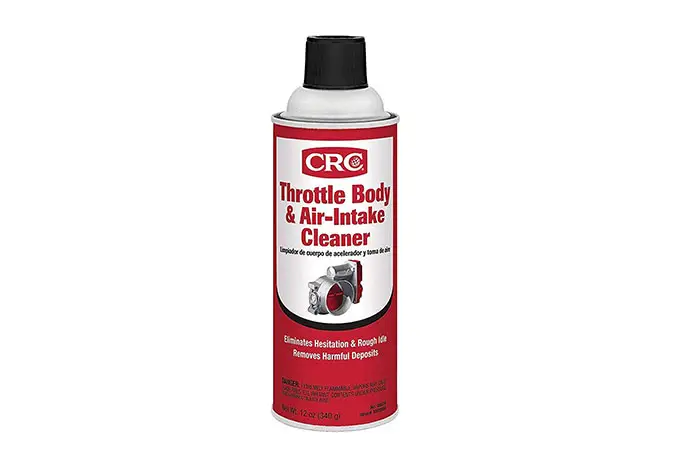
This cleaner is the best on the list, and it is safe in all fuel-injection systems. This product from CRC will remove varnish, gum, and grime from your throttle body. You should see an immediate improvement in rough idling, stalling, and fuel economy after performing a cleaning with this product.
— WD-40 Specialist Carb/Throttle Body Cleaner

This product from WD-40 should only be used on non-painted metal surfaces, but this solvent will take care of all the buildup and gunk inside your throttle body. This product is safe in fuel injection systems as well as carburetors. See an improvement in your fuel economy and engine performance after cleaning your throttle body with this cleaner from WD-40.
— Johnsen’s Throttle Body & Air Intake Cleaner
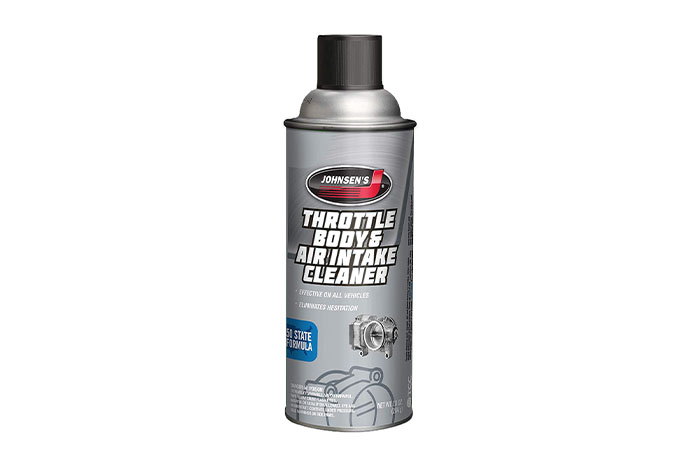
This powerful cleaner is safe on both metal and plastic surfaces, and it provides immediate help for hard starts and other dirty throttle body issues. It will clean all the air intake openings in your fuel-injection system, and you should notice an improvement in your engine’s performance. The additives in this cleaner also make it VOC-compliant in all 50 states.
— Valvoline Carb And Throttle Body Cleaner
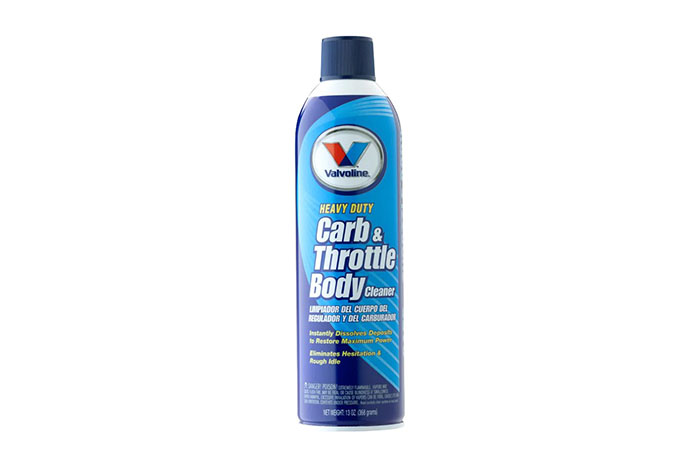
Valvoline is a trusted name in the automotive industry, and its throttle body and carburetor cleaner products do not disappoint. This cleaner will instantly dissolve buildup and deposits in the throttle body, and the powerful spray will blast away loose debris. You can expect to restore lost power to your engine after using this product.
How To Replace Your Throttle Position Sensor
Sometimes your throttle position sensor fails, and replacement is the only option. Replacing the sensor is not overly difficult, but there are a few things you need to keep in mind. First, go ahead and disconnect the negative battery terminal. Next, locate the throttle position sensor on the throttle body. You might have to remove the air duct from the throttle body to access the sensor.
Remove the electrical connector from the sensor, and then remove the sensor from the throttle body by taking out the screws that hold it in place. Reattach the new sensor by replacing the screws holding it onto the throttle body. Reattach the air duct if necessary, and then reconnect the battery. Start your engine and watch for the check engine light. If everything was done properly, your car should be running smoothly. If you see warning lights, use a scan tool to read the trouble codes and determine the proper fix.
The Bottom Line
Whether you have a Chevy, Honda, Toyota, Nissan, or any other make of car, most newer engines rely on a throttle position sensor to control the position of the throttle plate. When the sensor gets dirty, you may experience rough idling or erratic throttle response. This can be frustrating and even dangerous in heavy traffic. Cleaning your throttle position sensor will usually eradicate the problems and keep your car running smoothly. The cleaning process is as simple as spraying some throttle body cleaner inside the unit and wiping it clean. You should see an immediate improvement in engine performance and fuel economy.
Frequently Asked Questions
How do you know if the throttle position sensor needs to be replaced?
You can test the throttle position sensor with a multimeter to determine whether it needs to be replaced. As the gas pedal is pressed, the output from the sensor should increase in a steady and linear fashion. If the increase is jumpy or erratic, then the sensor may be bad or dirty. You can attempt to clean the sensor to see if that fixes the problem. If cleaning does not help, the sensor will need replacement.
What is the difference between a throttle position sensor and a throttle body sensor?
There is really no difference between these two sensors, as most people use the terms interchangeably. The proper term is a throttle position sensor, although some people call it a throttle body sensor because it is affixed to the throttle body. The sensor relays information to the car’s ECU about the position of the throttle or gas pedal. The output from the sensor is used to control the actuator that opens and closes the throttle plate.
Can you fix a throttle position sensor?
You can sometimes clean a dirty throttle position sensor and restore proper functionality. However, it is not usually possible to fix a faulty TPS. Once the sensor goes bad, you will need to replace the sensor with a new one. Thankfully, these parts are not very expensive. You can buy one for under $20 for most cars, although they might cost as much as $50 on some vehicles.

